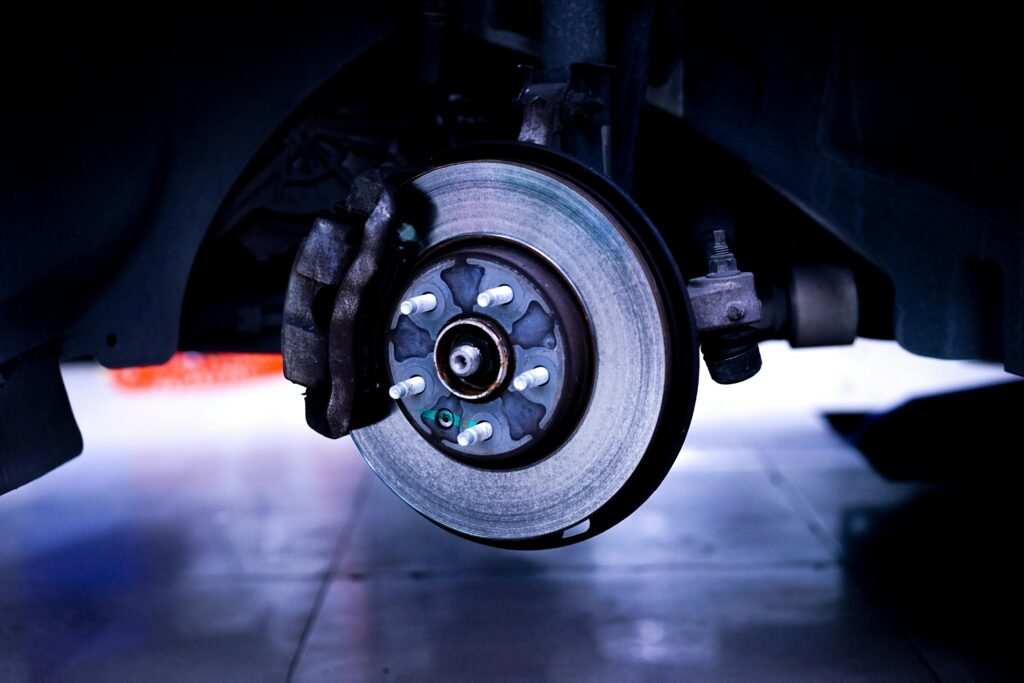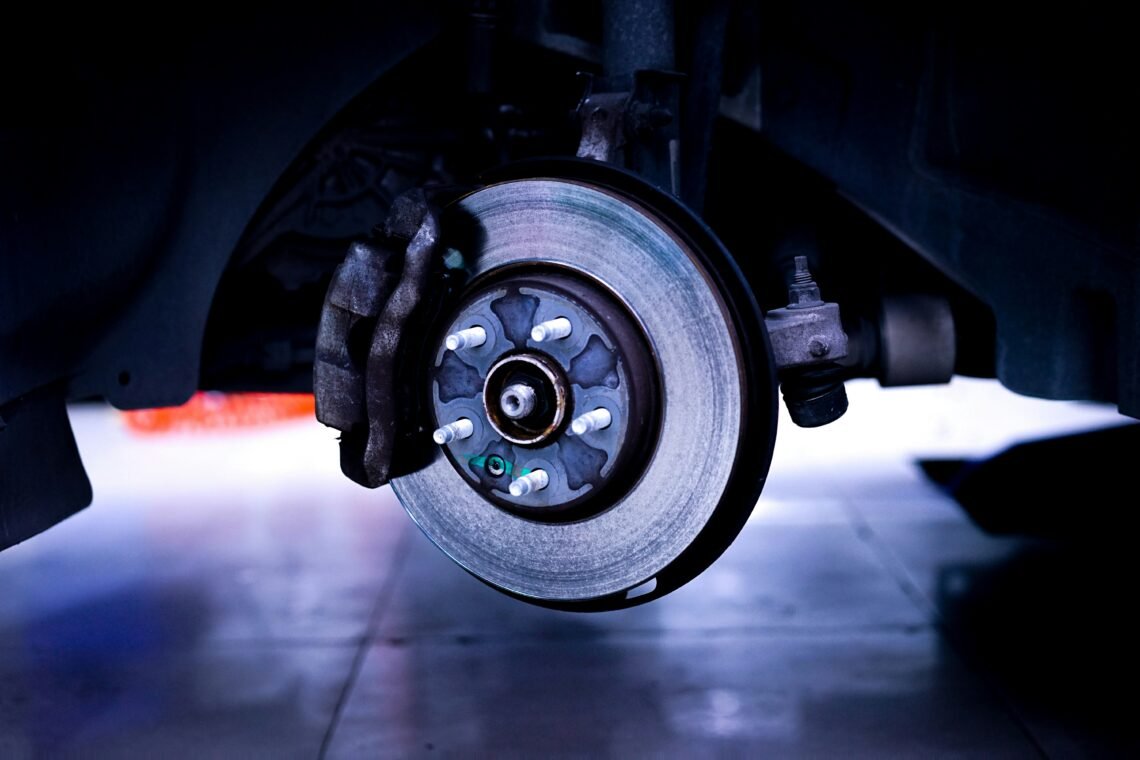In this comprehensive guide, you will discover a plethora of techniques that will revolutionize the way you preserve your tires. Whether you’re a seasoned driver or just starting, taking care of your tires is essential for optimal performance and longevity. From simple maintenance tips to advanced preservation techniques, this article will equip you with the knowledge to keep your tires in top shape. So, sit back, relax, and get ready to unlock the ultimate guide to effective tire preservation.

This image is property of images.unsplash.com.
Proper Tire Inflation
Importance of maintaining proper tire pressure
Maintaining proper tire inflation is crucial for several reasons. It ensures optimal performance, improves fuel efficiency, and enhances safety on the road. When your tires are properly inflated, they provide proper traction and grip, allowing you to have better control over your vehicle. Additionally, it helps to distribute the weight of your vehicle evenly across all four tires, reducing the risk of uneven tire wear and potential blowouts.
How to check tire pressure
Checking your tire pressure regularly is a simple yet essential task. You can use a tire pressure gauge to measure the pressure of each tire. Start by removing the valve cap on the tire and firmly pressing the gauge onto the valve stem. The gauge will display the current pressure, and you can compare it to the recommended pressure for your vehicle. If the pressure is too low, add air until it reaches the recommended level. If it’s too high, release some air until it reaches the desired pressure.
Recommended tire pressure
The recommended tire pressure can usually be found in your vehicle’s owner’s manual or on a sticker located on the driver’s side door jamb. It is important to note that the recommended pressure may vary depending on the size and type of tires you have installed. Typically, passenger cars have recommended pressures ranging from 30 to 35 PSI (pounds per square inch), but it’s always best to consult your specific vehicle’s guidelines.
Effects of under-inflation
Under-inflated tires can lead to numerous issues. Firstly, they can cause increased rolling resistance, resulting in decreased fuel efficiency. Secondly, under-inflated tires generate more heat, which can lead to premature tire wear and potential blowouts. Moreover, it negatively impacts the handling and performance of your vehicle, making it more difficult to control and increasing the risk of accidents.
Effects of over-inflation
Just like under-inflation, over-inflation can cause its own set of problems. Over-inflated tires have a smaller contact patch with the road, leading to reduced traction and a harsher ride. They are also more susceptible to damage from potholes and other road hazards. Over time, over-inflated tires may develop uneven wear patterns, resulting in the need for premature replacement. Additionally, they can negatively impact the braking and handling performance of your vehicle.
Regular tire pressure checks
To ensure that your tires remain properly inflated, it is recommended to check the tire pressure at least once a month and before long road trips. By making regular tire pressure checks a part of your routine maintenance, you can help extend the lifespan of your tires, improve fuel efficiency, and enhance the overall safety of your vehicle.
Rotation and Balancing
Why tire rotation is important
Tire rotation is an essential practice that involves moving the tires to different positions on the vehicle. This helps to ensure even tire wear, maximizing the lifespan of your tires and improving overall performance. As tires wear differently depending on their locations, rotating them allows for a more balanced wear pattern, reducing the need for premature tire replacement.
When to rotate tires
It is generally recommended to rotate tires every 6,000 to 8,000 miles, or as advised by your vehicle manufacturer. However, factors such as driving conditions, tire type, and tire wear may influence the frequency of rotations. If you notice uneven wear or if your vehicle exhibits vibrations or pulling to one side, it may be a sign that a tire rotation is needed.
How tire rotation extends tire life
Tire rotation helps to distribute the wear more evenly across all four tires. By switching them from one position to another, the tires experience different types of wear, which helps to prevent uneven tread wear. This extends the lifespan of your tires and ensures that you get the most out of your investment. Additionally, by promoting even wear, tire rotation enhances the overall stability and handling of your vehicle.
Balancing tires for even wear
In addition to tire rotation, balancing your tires is also important for promoting even wear. Tire balancing involves placing small weights on the rim of the tire to counterbalance any uneven distribution of weight. This ensures that your tires rotate smoothly and evenly, preventing vibrations and minimizing stress on suspension components. Balancing your tires during rotation or whenever you notice vibrations can help prolong tire life and improve driving comfort.
Finding a professional tire rotation and balancing service
While tire rotation and balancing can be done on your own if you have the necessary equipment and knowledge, it is often best to seek the assistance of a professional. Automotive service centers and tire shops have the expertise and specialized equipment to perform tire rotation and balancing accurately and efficiently. Regularly scheduling these services with a trusted professional will help ensure the longevity and performance of your tires.
Wheel Alignment
Understanding wheel alignment
Wheel alignment refers to the adjustment of the angles at which your wheels make contact with the road. This includes three main measurements: camber, toe, and caster. Proper wheel alignment ensures that your tires make even and consistent contact with the road surface, maximizing tire life and preserving vehicle handling and safety.
Signs of misaligned wheels
There are several signs that indicate your wheels may be misaligned. These include your vehicle pulling to one side, uneven or excessive tire wear, steering wheel vibrations, or a crooked steering wheel when driving straight. If you notice any of these symptoms, it is important to have your wheel alignment checked and adjusted as needed.
Importance of proper wheel alignment
Proper wheel alignment is crucial for several reasons. Firstly, it helps to maintain optimal vehicle handling and control, ensuring that your vehicle responds predictably to steering inputs. Secondly, it promotes even tire wear, preventing premature tire replacement and maximizing tire life. Thirdly, it can improve fuel efficiency by reducing rolling resistance. Lastly, proper wheel alignment enhances road safety by minimizing the risk of accidents caused by unpredictable handling.
How wheel misalignment affects tire wear
When your wheels are misaligned, it can lead to uneven tire wear patterns. For example, if the wheels are toe-in (pointing inward), the edges of the tires may wear faster than the center. Conversely, if the wheels are toe-out (pointing outward), the center of the tires may wear faster than the edges. Misalignment can also cause camber wear, where the inside or outside edges of the tires wear more quickly. By correcting wheel alignment, you can prevent these uneven wear patterns and extend the life of your tires.
Getting professional wheel alignment
Professional wheel alignment should be performed by a qualified technician using specialized alignment equipment. They will measure the current alignment angles and make adjustments as necessary to bring them back to the manufacturer’s specifications. It is recommended to have your wheel alignment checked at least once a year or whenever you notice signs of misalignment. Regular alignment checks and adjustments will help maintain optimal tire wear, improve vehicle handling, and enhance overall safety.
Scheduling regular wheel alignment checks
To ensure that your wheels remain properly aligned, it is important to schedule regular wheel alignment checks as part of your routine maintenance. By detecting and correcting misalignments early, you can prevent uneven tire wear, enjoy a smoother and more comfortable ride, and prolong the lifespan of your tires. Work with a trusted automotive service center to have your wheel alignment checked regularly to keep your vehicle in top shape.
Proper Storage
Storing tires when not in use
Proper storage is essential when tires are not in use, such as during seasonal tire changes or when keeping a spare set. Storing tires correctly can help preserve their condition and extend their lifespan. Tires should be stored in a cool, dry, and clean environment away from direct sunlight, extreme temperatures, and sources of ozone, oil, and chemicals.
Preparing tires for storage
Before storing your tires, it is important to prepare them properly. Start by cleaning the tires thoroughly to remove any dirt or debris. This will help prevent the accumulation of moisture, which can lead to mold or mildew growth. Next, ensure that the tires are inflated to the recommended pressure to prevent damage from the weight of the stacked tires. It is also advisable to cover each tire with a tire bag or plastic wrap to protect them from dust and prevent any potential damage.
Choosing the right storage location
Finding the right storage location is crucial for keeping your tires in optimal condition. Ideally, select a location that is cool, dry, and well-ventilated. Avoid storing tires outdoors or in areas prone to extreme temperatures, as this can cause the rubber to degrade more quickly. If possible, store tires off the ground to prevent moisture damage.
Stacking or hanging tires
When storing tires, you have the option of stacking them or hanging them. If you choose to stack your tires, make sure to do so in a way that minimizes stress on the tires. Avoid placing heavy objects on top of them, as this can lead to distortion or damage. If hanging the tires, use sturdy hooks or tire racks designed for this purpose. Hanging tires can help relieve the pressure on the sidewalls and prevent any flat-spotting that can occur when tires are stored for an extended period.
Protecting tires from sunlight and extreme temperatures
Sunlight and extreme temperatures can cause significant damage to tires over time. UV rays from the sun can degrade the rubber and cause cracking, while extreme heat or cold can affect tire pressure and overall performance. To protect your tires, store them away from direct sunlight and in an area with temperature control. If storing tires outdoors is your only option, consider investing in tire covers or using a portable storage container to shield them from the elements.
Tire inspection before reinstallation
Before reinstalling stored tires, it is crucial to inspect them for any signs of damage or wear. Look for cracks, bulges, punctures, or degradation of the rubber. If you notice any significant damage, it may be necessary to replace the tires. Additionally, check the tire tread depth to ensure it meets the minimum legal requirements. Proper inspection before reinstallation will help ensure that your tires are safe and ready for use.

This image is property of images.unsplash.com.
Regular Inspection
Visual inspection of tire condition
Regular visual inspections of your tires are essential for identifying any signs of damage or wear. Take the time to visually inspect each tire, looking for cuts, bulges, cracks, or any other visible signs of damage. Additionally, examine the sidewalls for any abnormalities or signs of aging.
Checking for tire damage or wear
During your inspection, pay attention to signs of tire damage or excessive wear. Look for nails, screws, or other objects embedded in the tread, as they can lead to punctures or slow leaks over time. Examine the tread pattern for signs of uneven wear, including cupping, feathering, or excessive wear on one side. If you notice any significant damage or wear, it is advisable to have your tires inspected by a professional to determine if they need to be replaced.
Inspecting tire tread depth
Tire tread depth is an important factor in maintaining proper traction and preventing hydroplaning. The legal minimum tread depth is typically 2/32 of an inch, but for optimum safety, it is recommended to replace tires when the tread depth reaches 4/32 of an inch. To check tread depth, you can use a tire depth gauge or rely on the built-in wear indicators, also known as “wear bars,” which become visible when the tread depth is too low.
Identifying signs of aging or dry rot
Over time, tires can age and develop dry rot, especially if they are exposed to sunlight, extreme temperatures, or chemicals. Dry rot appears as small cracks or fissures on the sidewalls or in between the tread blocks. This can weaken the tire’s structure and increase the risk of a blowout. If you notice signs of dry rot during your inspection, it is advisable to have the tires inspected by a professional and consider replacing them if necessary.
Replacing worn or damaged tires
If your inspection reveals significant damage, excessive wear, or signs of aging, it is crucial to replace the affected tires promptly. Driving on worn or damaged tires can compromise your safety and the performance of your vehicle. When replacing tires, consider selecting a reputable brand and choose the correct size and type of tire for your specific vehicle and driving conditions. Investing in quality tires will provide you with better traction, improved handling, and increased durability.
Proper Tire Cleaning
Importance of keeping tires clean
Keeping your tires clean is not just an aesthetic choice – it is also essential for maintaining their condition and maximizing their lifespan. Regular cleaning helps remove dirt, road grime, and brake dust that can accumulate on the tire surface. This debris can be corrosive and can potentially cause damage to the rubber if left unattended for prolonged periods.
Choosing suitable tire cleaning products
When cleaning your tires, it is important to choose suitable cleaning products to avoid damaging the rubber. Avoid using harsh chemicals, such as bleach or solvent-based cleaners, as they can cause the rubber to deteriorate over time. Instead, opt for mild soap specifically formulated for cleaning tires, or choose specialized tire cleaning products available in the market.
Cleaning tires with regular soap and water
Cleaning your tires with regular soap and water is a safe and effective method. Start by rinsing the tires with water to remove loose dirt and debris. Then, apply a soapy solution to the tire’s surface and scrub gently with a soft brush or sponge. Pay particular attention to the sidewalls, as they can accumulate more dirt compared to the tread area. After scrubbing, rinse off the soap thoroughly, ensuring that no residue is left behind.
Removing stubborn stains or debris
In some cases, your tires may have stubborn stains or embedded debris that regular soap and water cannot remove. For these situations, a specialized tire cleaner or a mild degreaser can be used. Apply the cleaner to the affected area, agitate with a brush or sponge, and rinse off thoroughly. Always follow the manufacturer’s instructions for any cleaning product to ensure optimal results and avoid any potential damage.
Preventing tire sidewall damage during cleaning
When cleaning your tires, it is important to take precautions to prevent any damage to the sidewalls. Avoid using hard-bristle brushes or abrasive materials that can cause scratches or scuffs. Additionally, be cautious when using tire dressing products, as excessive application or contact with the sidewalls can lead to drying and cracking over time. Follow the instructions on the product and apply sparingly to avoid any adverse effects.

This image is property of images.unsplash.com.
Avoiding Extreme Driving Conditions
Impacts of extreme driving conditions on tires
Extreme driving conditions, such as high speeds, rough roads, excessive braking, and acceleration, can have a detrimental impact on your tires. These conditions increase the stress and strain on the tires, accelerating wear and potentially compromising their performance and safety. Avoiding extreme driving conditions can help preserve your tires’ integrity and extend their lifespan.
Effects of high-speed driving
Driving at high speeds generates heat, and excessive heat can lead to tire failure. The increased friction between the tire and the road, combined with excessive heat buildup, can cause the tire to wear more quickly and increase the risk of blowouts. It is important to adhere to posted speed limits and drive at a safe and responsible speed to reduce these risks and ensure the longevity of your tires.
Driving on rough or damaged roads
Rough or damaged roads can pose a challenge to your tires. Potholes, uneven surfaces, and debris can cause impact damage or punctures. Driving cautiously and avoiding rough roads whenever possible can help minimize the risk of tire damage. If encountering unavoidable rough road conditions, reduce speed and maintain a safe distance from other vehicles to allow for better tire absorption and prevent potential blowouts.
Avoiding excessive braking and acceleration
Excessive braking and acceleration put additional stress on your tires, leading to increased wear. Rapid stops and aggressive acceleration can cause the tires to lose traction and generate excessive heat. This can result in uneven tire wear and potentially compromise your control over the vehicle. By practicing smooth and gradual braking and acceleration, you can minimize tire stress and prolong their lifespan.
Minimizing tire stress and strain
To minimize tire stress and strain, it is essential to practice defensive driving techniques. Maintain a safe following distance from the vehicle in front of you, which allows for more gradual braking and acceleration. Avoid sudden lane changes or aggressive maneuvers that can put excessive lateral forces on the tires. By being considerate of your driving habits and adopting a relaxed and cautious approach, you can reduce the stress and strain on your tires.
Tire Protection Products
Benefits of using tire protection products
Using tire protection products can provide numerous benefits in terms of tire longevity and appearance. Tire protectants and sealants can help prevent dry rot, cracking, and fading of the rubber due to exposure to UV rays and other environmental factors. Tire covers provide additional protection against sunlight and reduce the risk of sidewall damage. Tire shine or protectant sprays can enhance the appearance of your tires, giving them a clean and glossy finish.
Types of tire protectants and sealants
There are various types of tire protectants and sealants available in the market. These products may contain UV blockers, polymers, or silicone compounds that help to shield the rubber from the damaging effects of UV rays. Tire sealants, on the other hand, are specifically designed to seal punctures and prevent leaks. They often come in liquid form and can be injected into the tire through the valve stem.
Applying tire sealants for puncture protection
When applying tire sealants for puncture protection, carefully follow the manufacturer’s instructions. Start by deflating the tire to a recommended pressure and remove the valve core using a valve core tool. Attach the sealant container to the valve stem and squeeze the appropriate amount of sealant into the tire. Once the sealant is inside, reinflate the tire to the recommended pressure. It is essential to drive the vehicle immediately afterward to allow the sealant to evenly distribute and seal any potential punctures.
Choosing suitable tire covers
Tire covers are a great way to protect your tires from sunlight and debris when your vehicle is parked for extended periods. When choosing tire covers, ensure that they are made from a durable and UV-resistant material. The covers should be large enough to fully enclose the tire and have a secure fastening mechanism to prevent them from being blown off by the wind.
Using tire shine or protectant sprays
Tire shine or protectant sprays can be used to enhance the appearance of your tires and provide additional protection. Before applying the spray, ensure that the tires are clean and free from any dirt or debris. Apply the spray evenly across the tire’s surface, making sure to cover both the tread area and sidewalls. After application, allow the product to dry completely before driving to avoid any potential sling-off onto your vehicle’s body.
Avoiding Overloading and Underloading
Understanding weight limits and load capacity
Every tire has a maximum load capacity, which is indicated by the load index. It represents the maximum weight that a tire can safely carry at the recommended tire pressure. It is crucial to understand and adhere to the weight limits specified by the tire manufacturer and ensure that your vehicle is not overloaded or underloaded.
Effects of overloading or underloading
Overloading or underloading your vehicle can have significant effects on tire performance and safety. Overloading places excess stress on the tires, leading to increased heat buildup and tire wear. It can also cause the tires to exceed their load capacity, potentially resulting in blowouts. On the other hand, underloading can cause the tires to wear unevenly and reduce their performance capabilities. It is essential to adhere to the recommended weight limits to maintain optimal tire performance and maximize their lifespan.
Checking tire load index and speed rating
To ensure that you are within the recommended load capacity for your tires, you should check the load index and speed rating. The load index is a numerical code that corresponds to the maximum weight each tire can safely carry. It ranges from 0 to 279, with a corresponding weight capacity in pounds or kilograms. The speed rating, represented by a letter, indicates the maximum speed at which the tire can safely operate. It is vital to choose tires with the appropriate load index and speed rating for your vehicle’s requirements.
Distributing load evenly in the vehicle
To optimize tire performance and ensure even wear, it is important to distribute the load evenly in your vehicle. Uneven distribution can lead to excessive stress on certain tires, causing them to wear more quickly. When packing your vehicle, try to balance the weight between the front and rear axles and distribute the load as evenly as possible side to side. Additionally, make sure that any heavy items are properly secured and cannot shift during transit.
Calculating proper tire inflation for loads
Proper tire inflation is crucial when carrying heavy loads. Underinflation can cause the tire sidewalls to flex excessively, leading to increased heat buildup and potential blowouts. Overinflation, on the other hand, reduces the tire’s ability to absorb impacts and increases the risk of damage. To calculate the correct tire inflation for loads, refer to your vehicle manufacturer’s guidelines or consult a tire professional. They can provide you with the recommended pressure based on the load you are carrying, ensuring optimal tire performance and safety.
Tire Recycling and Disposal
Importance of responsible tire disposal
Proper tire disposal is crucial to protect the environment and prevent illegal dumping. Old and worn-out tires can pose significant environmental hazards if not disposed of properly. They can harbor stagnant water, becoming breeding grounds for disease-carrying mosquitoes. Additionally, when tires are burned or improperly discarded, they release harmful chemicals into the air and groundwater, polluting the ecosystem.
Finding local tire recycling facilities
To ensure responsible tire disposal, it is important to find local tire recycling facilities. Many communities have recycling centers or designated collection sites that accept old tires. Contact your local government agencies, waste management departments, or environmental organizations to inquire about the closest tire recycling facilities in your area.
Donating or reusing old tires
In some cases, old tires may still have some life left in them and can be reused or donated. Many tire retailers have tire take-back programs or partnerships with charitable organizations that accept used tires. These tires can be refurbished, retreaded, or used for other purposes like playground equipment or rubberized asphalt. Consider exploring these options before disposing of your old tires to minimize waste and contribute to sustainability efforts.
Avoiding illegal tire dumping
Illegal tire dumping poses serious environmental and health risks. Dumped tires can collect stagnant water, attracting disease-spreading mosquitoes and creating a breeding ground for pests. The chemicals in the tires can leach into the surrounding soil and water, contaminating the ecosystem. To avoid contributing to this problem, never dispose of tires in unauthorized locations such as vacant lots, forests, rivers, or public spaces. Always opt for proper recycling or disposal methods to protect the environment and your community.
Proper disposal methods for damaged or unusable tires
For damaged or unusable tires that cannot be donated or reused, proper disposal methods must be followed. Check with local tire recycling facilities on how to dispose of these tires safely. In many cases, tires can be dropped off at designated locations or collection events. Always make sure to remove any rims or other non-rubber materials before disposal, as they may require separate disposal methods. Following proper disposal procedures ensures that your old tires are handled responsibly and minimizes their negative impact on the environment.
In conclusion, effective tire preservation techniques encompass various aspects of tire care and maintenance. Proper tire inflation, regular rotations and balancing, wheel alignment, storage practices, inspections, cleaning, avoiding extreme driving conditions, and utilizing tire protection products all contribute to extending the lifespan and enhancing the performance of your tires. By implementing these practices, you can enjoy safer and more efficient journeys while getting the most out of your investment in tires. Remember to always consult the manufacturer’s guidelines and seek the assistance of professionals when needed to ensure the proper care and maintenance of your tires.





